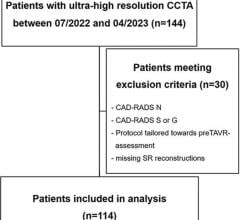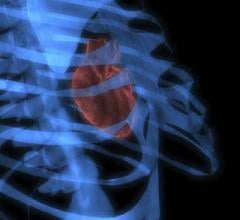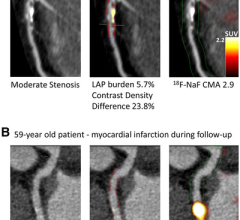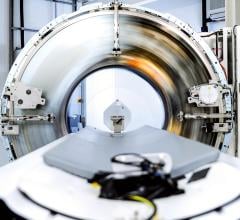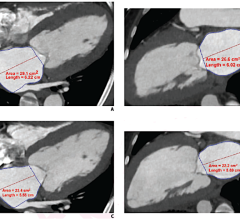November 29, 2007 – According to findings presented at RSNA 2007, Computed tomography (CT) angiography is as accurate as an invasive angiogram in detecting coronary artery disease.
For the Coronary Artery Evaluation Using 64-Row Multidetector CT Angiography (CORE-64) Trial, researchers at nine international centers studied 291 patients who were scheduled to undergo invasive coronary angiography for suspected or unknown coronary artery disease.
The study found that 64-slice multidetector CT angiography was highly accurate in detecting blockages of greater than 50 percent, with a sensitivity of 85 percent and a specificity of 90 percent. The noninvasive exam was equal in accuracy to invasive angiography in its ability to identify patients to be referred for angioplasty or bypass surgery.
The Assessment by Coronary Computed Tomographic Angiography of Individuals UndeRgoing InvAsive Coronary AngiographY (ACCURACY) Trial compared 64-row coronary computed tomographic angiography (CCTA) to quantitative coronary angiography (QCA). The results demonstrated that CCTA is highly accurate in detecting coronary blockages in chest pain patients referred for invasive coronary angiography and is also an effective noninvasive method to exclude obstructive coronary blockages.
Sixteen institutions performed CCTA on 232 patients with typical or atypical chest pain prior to invasive coronary angiography. Findings were then compared to those of QCA, the reference standard used to quantify the results of the invasive coronary angiography.
A total of 82 blockages greater than 50 percent in 49 patients and 31 blockages greater than 70 percent were detected in 28 patients by QCA. Per-patient sensitivity and specificity of CCTA were 93 percent and 82 percent, respectively, for blockages greater than 50 percent, and 91 percent and 84 percent for blockages greater than 70 percent. In addition, negative predictive value was 97 to 99 percent.
For more information: www.rsna.org


 November 13, 2025
November 13, 2025 


